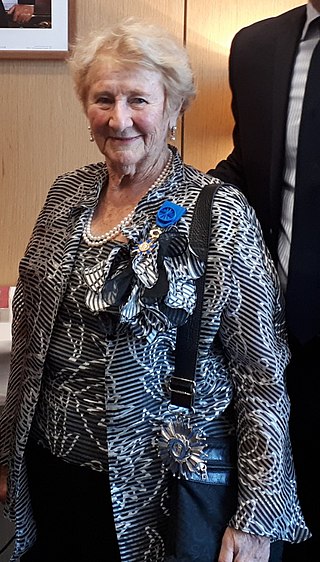
The Acadians are an ethnic group descended from the French who settled in the New France colony of Acadia during the 17th and 18th centuries. Most Acadians live in the Northern American region of Acadia, as it is the region where the descendants of a few Acadians who escaped the Expulsion of the Acadians re-settled. Most Acadians in Canada continue to live in majority French-speaking communities, notably those in New Brunswick where Acadians and Francophones are granted autonomy in areas such as education and health.

Acadia was a colony of New France in northeastern North America which included parts of what are now the Maritime provinces, the Gaspé Peninsula and Maine to the Kennebec River. During much of the 17th and early 18th centuries, Norridgewock on the Kennebec River and Castine at the end of the Penobscot River were the southernmost settlements of Acadia. The French government specified land bordering the Atlantic coast, roughly between the 40th and 46th parallels. It was eventually divided into British colonies. The population of Acadia included the various indigenous First Nations that comprised the Wabanaki Confederacy, the Acadian people and other French settlers.

Antonine Maillet, is an Acadian novelist, playwright, and scholar. She was born in Bouctouche, New Brunswick, Canada.

Route 11 is a provincial highway in northeastern New Brunswick, Canada. The 440-kilometre (270 mi) road runs from Moncton to the Quebec border, near Campbellton, at the Matapédia Bridge, following the province's eastern and northern coastlines.
The Acadian World Congress, or Le Congrès Mondial Acadien, is a festival of Acadian and Cajun culture and history, held every five years. It is also informally known as the Acadian Reunion. Its creator was André Boudreau (1945-2005).

Caisse populaire acadienne ltée, operating as UNI Financial Cooperation, is a Francophone credit union based in New Brunswick, Canada whose members are primarily Acadians. UNI's administrative headquarters are in Caraquet on the Acadian Peninsula.

The Acadians are the descendants of 17th and 18th century French settlers in parts of Acadia in the northeastern region of North America comprising what is now the Canadian Maritime Provinces of New Brunswick, Nova Scotia and Prince Edward Island, the Gaspé peninsula in eastern Québec, and the Kennebec River in southern Maine. The settlers whose descendants became Acadians primarily came from the southwestern and southern regions of France, historically known as Occitania, while some Acadians are claimed to be descended from the Indigenous peoples of the region. Today, due to assimilation, some Acadians may share other ethnic ancestries as well.

Phil Comeau, CM is a Canadian film and television director, born in Saulnierville, Nova Scotia. He lives in Moncton, New Brunswick and Montreal, Quebec.

L'Acadie Nouvelle is an independent French newspaper published in Caraquet, New Brunswick, Canada since June 6, 1984. It is published from Monday through Saturday and is the only French-language daily newspaper in New Brunswick.
Festival international du cinéma francophone en Acadie, or FICFA, is a francophone international film festival held annually in Moncton, New Brunswick.

Léonard Forest is an Acadian filmmaker, poet and essayist. He was born in Massachusetts, United States, and grew up in Moncton, New Brunswick, Canada.

Caraquet is a town in Gloucester County, New Brunswick, Canada.

Acadian cuisine comprises the traditional dishes of the Acadian people. It is primarily seen in the present-day cultural region of Acadia. Acadian cuisine has been influenced by the Deportation of the Acadians, proximity to the ocean, the Canadian winter, bad soil fertility, the cuisine of Quebec, American cuisine, and English cuisine, among other factors.
Françoise Enguehard a French-speaking author from Saint-Pierre-et-Miquelon who now resides in Canada. She served as president of the National Society of Acadia from 2006 to 2012 and is the current president of the National Acadian Foundation. She and her husband have been involved in promoting the history and education about Acadian people, through the development of schools. She speaks throughout the French-speaking countries to promote French culture. She received the rank of Knight in the Order of La Pléiade in 2011 and was honored as a knight in the Legion of Honour, France's highest award, in 2015 for her commitment to preserving the heritage of Acadians and Saint-Pierre-et-Miquelon.
Corinne Gallant was a Canadian professor emeritus and feminist. She held the office of Vice-Dean of the Faculty of Arts and director of the philosophy program at the Université de Moncton. As a feminist leader, she co-chaired a working committee that led to the creation of the New Brunswick Advisory Council on the Status of Women and chaired the Canadian Research Institute for the Advancement of Women. She was made a member of the Order of Canada in 1988 and received the Order of Moncton in 2012.
Louis Haché was a Canadian writer considered to be one of the great Acadian novelists.

Les Hôtesses d'Hilaire is a Canadian rock band based in Moncton, New Brunswick.

Acadia is a North American cultural region in the Maritime provinces of Canada where approximately 300,000 French-speaking Acadians live. The region lacks clear or formal borders; it is usually considered to be the north and east of New Brunswick as well as a few isolated localities in Prince Edward Island and Nova Scotia. Some also include a few localities in Quebec and/or Maine.
Mathilda Blanchard was a Canadian labour leader. She was nicknamed la pasionaria acadienne due to her engagement and defense of Acadian workers in New Brunswick, particularly in the seafood trade.

Sainte-Anne-du-Bocage, or simply Le Bocage, is a Catholic sanctuary in Caraquet, New Brunswick (Canada).














